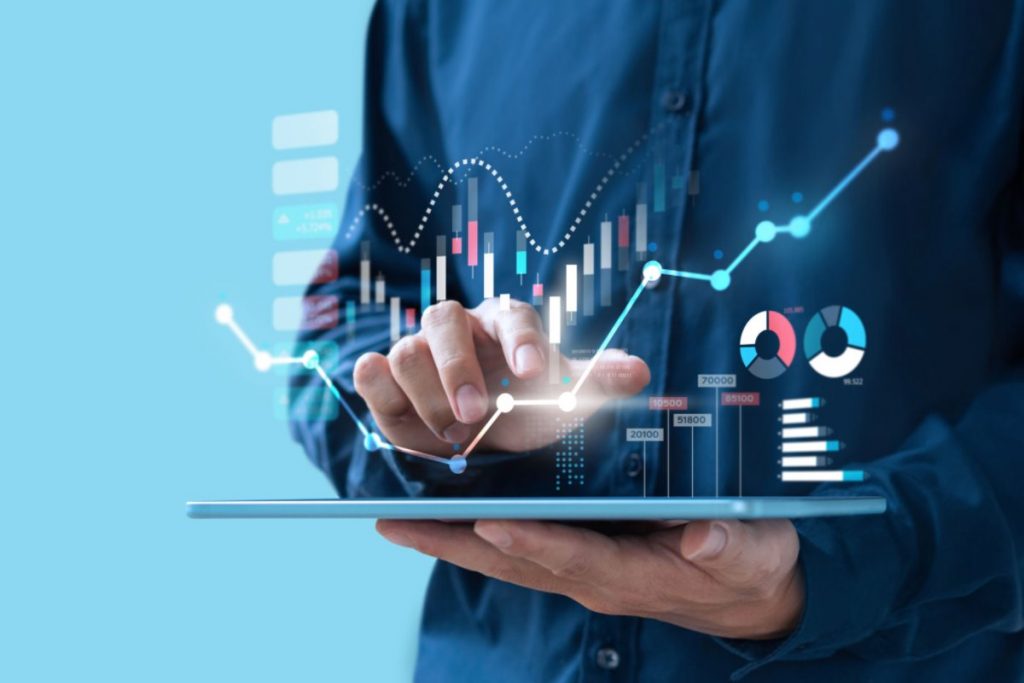The world of economics is a dynamic and interconnected web that never ceases to evolve. As businesses expand beyond their national borders, financial markets become increasingly interconnected, and global trade flourishes. In such a rapidly changing landscape, staying well-informed about global economic trends is no longer just an option; it’s a necessity. This article takes an in-depth dive into the complex and ever-shifting realm of global economic trends. We will explore their profound significance, unravel what exactly constitutes these trends, dissect the multifaceted factors that influence them, and provide invaluable predictions for the future.
Table of Contents
Understanding Global Economic Trends
Economic trends, in essence, are the discernible patterns and shifts in the global economy’s behavior over time. They encompass a vast array of indicators, including Gross Domestic Product (GDP) growth rates, unemployment statistics, inflation rates, and consumer spending habits. These indicators collectively paint a picture of the world’s economic health, enabling us to identify emerging patterns and anticipate impending shifts.
Global economic trends can be further categorized into long-term and short-term trends. Long-term trends encompass changes that span several years or even decades, while short-term trends are more transient, manifesting over the course of months or a few years. Distinguishing between these trends is critical for businesses and investors alike, as it aids in making strategic decisions.
The Historical Context of Global Economic Trends
To gain a deeper understanding of the current economic landscape and make well-informed predictions, it’s essential to explore the historical context of global economic trends. By tracing the evolution of these trends over time, we can identify recurring themes and critical events that have molded the world economy into what it is today.
For instance, the Great Depression of the 1930s serves as a stark reminder of the catastrophic consequences of unchecked economic imbalances. Understanding this historical context allows us to appreciate the significance of policies and safeguards put in place to prevent a similar catastrophe.
Factors Influencing Global Economic Trends

Macroeconomic Indicators
Macroeconomic indicators are the pulse of the global economy. Key figures like inflation rates, interest rates, and unemployment rates hold immense sway over economic trends.
For instance, a sudden increase in inflation rates can lead to higher interest rates, which may, in turn, slow down economic growth. Conversely, central banks may lower interest rates to stimulate economic activity during times of recession.
Geopolitical Events and Their Impact
The global economy is far from immune to geopolitical events. Trade disputes, international conflicts, and multilateral agreements can all send shockwaves through financial markets and disrupt established economic trends.
For instance, the ongoing trade tensions between major economic powers, such as the United States and China, have had far-reaching consequences on global supply chains and international trade patterns. These geopolitical shifts necessitate a thorough understanding of their impact on economic trends.
Technological Advancements
The relentless pace of technological innovation continually reshapes industries and international trade. The rise of e-commerce, the proliferation of artificial intelligence, and advancements in renewable energy are just a few examples of how technology influences economic trends.
In the coming years, technological trends like the widespread adoption of blockchain technology and the emergence of quantum computing are poised to disrupt industries and redefine global economic landscapes. Acknowledging these trends is crucial for adapting to the new economic paradigms they create.
Environmental and Sustainability Factors
Sustainability has transitioned from a buzzword to a driving force in the global economy. As environmental concerns and climate change grow more urgent, sustainability practices are increasingly influencing economic trends.
Governments and businesses alike are embracing sustainability to meet consumer demand and reduce their environmental footprint. For instance, the shift towards electric vehicles and renewable energy sources reflects the growing importance of sustainability in economic decision-making.
Analyzing Market Movements

Stock Market Trends
Stock markets are often viewed as barometers of economic health. Understanding what drives stock market movements is paramount for investors and businesses. Beyond the day-to-day fluctuations, stock market trends provide insights into the overall confidence in the economy.
Stock market indices, such as the S&P 500 and the Dow Jones Industrial Average, reflect the collective sentiment of investors. A rising market indicates optimism, while a downturn may signify growing concerns about the economy. Investors and financial analysts closely follow these trends to make informed investment decisions.
Moreover, understanding the sectors that outperform or underperform during specific economic trends is essential. For example, during economic downturns, sectors like healthcare and utilities may exhibit resilience, while cyclical sectors like manufacturing and automotive may experience declines.
Currency Exchange Rate Fluctuations
Currency exchange rates play a pivotal role in international trade. Fluctuations in exchange rates can affect the profitability of businesses engaged in cross-border commerce and impact the purchasing power of consumers abroad.
Understanding the factors that drive exchange rate fluctuations, such as interest rate differentials, economic indicators, and geopolitical events, is vital. Businesses engaging in international trade often employ hedging strategies to mitigate the risks associated with currency fluctuations.
Moreover, governments and central banks may intervene in currency markets to stabilize their domestic currencies’ value. These interventions can have ripple effects on global economic trends and should be carefully monitored.
Commodities and Raw Materials Prices
Commodities and raw materials are the lifeblood of the global economy. They encompass everything from energy sources like oil and natural gas to industrial metals like copper and agricultural products like wheat and soybeans.
The prices of these commodities are influenced by a complex web of factors, including supply and demand dynamics, geopolitical tensions, and weather patterns. For example, geopolitical tensions in oil-producing regions can disrupt the global supply of oil, leading to price spikes that affect numerous industries.
Commodities trends can offer insights into broader economic trends. Rising prices for industrial metals may indicate increased infrastructure and construction activity, while falling agricultural prices may signal an oversupply of food products.
Predictions and Future Outlook

Expert Forecasts and Projections
Leading economists and financial analysts dedicate their careers to studying and predicting global economic trends. Their forecasts and projections provide valuable insights into what the future may hold for the world economy.
It’s essential to consider a range of expert opinions when making decisions based on economic trends. Different experts may have varying outlooks, and understanding their rationales can help form a more informed perspective.
To illustrate, economists may provide forecasts for GDP growth, inflation rates, and unemployment figures. Businesses and policymakers can use these forecasts to plan for the coming years, making adjustments to their strategies and policies accordingly.
The Role of Government Policies
Government policies wield significant influence over economic trends. Fiscal policies, such as taxation and government spending, can stimulate or restrain economic growth. Meanwhile, monetary policies, primarily managed by central banks, impact interest rates and the money supply, affecting borrowing costs and overall economic activity.
In recent years, government policies have taken center stage in addressing economic challenges. Responses to the COVID-19 pandemic, for instance, involved significant government intervention through stimulus packages and monetary policy adjustments.
Understanding how government policies evolve and their potential consequences is crucial for businesses and investors. Changes in tax laws, regulatory reforms, and shifts in trade policies can have far-reaching implications.
Implications for Businesses and Investors
For businesses and investors, staying attuned to economic trends is essential for making strategic decisions. Economic shifts can influence market demand, supply chain dynamics, and investment opportunities.
Here are some considerations:
- Market Entry and Expansion: Economic trends in different regions can influence decisions about entering new markets or expanding operations. Understanding the economic conditions in a target market is essential for making informed choices.
- Risk Management: Economic trends can introduce risks, but they can also present opportunities. Effective risk management strategies should take economic trends into account.
- Investment Decisions: Investors should align their investment portfolios with their economic outlook. For instance, during periods of economic uncertainty, investors may seek safe-haven assets like gold or bonds.
- Supply Chain Optimization: Businesses must adapt their supply chains to changing economic conditions. For instance, during economic downturns, cost optimization may become a priority.
Case Studies
Notable Examples of Global Economic Trends
Real-world case studies serve as practical lessons in understanding how economic trends impact businesses and nations. By examining these examples, we can gain valuable insights into the dynamics of economic trends.
One such example is the impact of the 2008 global financial crisis on various industries and economies worldwide. It serves as a reminder of the far-reaching consequences of economic trends and the importance of risk management.
Lessons Learned from Previous Trends
The past holds a treasure trove of lessons for navigating economic trends. Reflecting on past trends, such as the dot-com bubble of the early 2000s or the oil price shocks of the 1970s, allows us to identify common patterns and pitfalls to avoid.
For instance, the dot-com bubble serves as a reminder of the dangers of speculative excess, while the oil price shocks underscore the importance of energy diversification and conservation efforts.
Challenges and Risks

Potential Pitfalls in Predicting Trends
Predicting economic trends is a complex endeavor fraught with potential pitfalls. Among the common challenges are:
- Data Limitations: Economic data can be imperfect or subject to revisions, making precise predictions challenging.
- Unforeseen Events: Unexpected events, such as natural disasters or pandemics, can disrupt even the most well-founded forecasts.
- Behavioral Economics: Human behavior can defy rational economic models, leading to unexpected market movements.
Mitigating Risks in Economic Forecasting
Despite the challenges, there are strategies for mitigating risks in economic forecasting:
- Diversification: Diversifying investments or market exposure can help spread risk.
- Scenario Planning: Preparing for multiple economic scenarios can help businesses and investors adapt quickly to changing conditions.
- Continuous Monitoring: Staying vigilant and regularly reassessing economic trends can help spot early warning signs.
Conclusion
In conclusion, comprehending global economic trends is not merely an academic exercise; it is the bedrock upon which informed decisions are made in today’s interconnected world. By precisely defining these trends, exploring the factors that shape them, and analyzing market movements, individuals and businesses alike can navigate the ever-evolving global economy with poise and confidence.
Understanding global economic trends is a continuous endeavor. It requires diligence, adaptability, and a keen eye for emerging patterns. By staying informed and embracing change, we can not only navigate the complex world of economics but also thrive within it.


